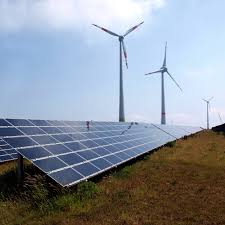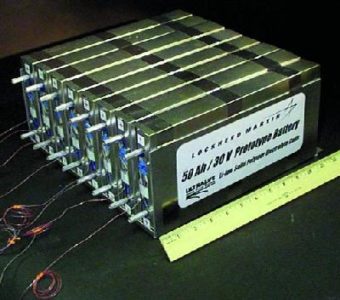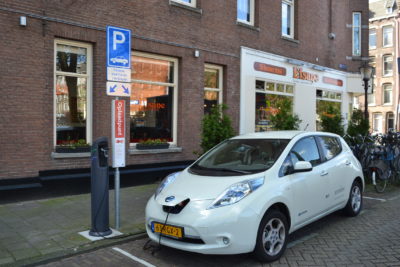Betting on Batteries
Was the Aliso Canyon leak a blessing in disguise?
As reported on the front page of today’s New York Times, 2016 was the third straight year to set a record for highest temperature, the first time the Earth has seen three record-setting years in a row since WWII (1939, 1940, and 1941 each set records, but now 1941 only ranks as the 37th hottest year). The urgency of climate change has never been greater, but, as reported in just yesterday’s New York Times, even the most ambitious leaders on the issue in the U.S. are falling far short of where we need to be. California, the supposed champion of U.S. climate change mitigation, is reducing its carbon intensity at one-third the pace estimated as necessary to avoid global temperature rising more than two degrees Celsius. In other words, we’ve got a lot of work to do.
 One of the biggest challenges in reducing reliance on fossil fuels to generate electricity, as pointed out in that same NYTimes piece, is ensuring reliable electricity provision while increasing our use of variable sources, such as wind and solar. Consider the situation in Germany, which usually generates about a third of its electricity from renewable sources. However, a series of odd weather systems last year resulted in the country generating less power from solar, despite having more panels installed. As a result, Germany actually saw its carbon emissions from energy generation rise. The New York Times frames this challenge as an argument against the general backing away from nuclear power – a carbon-free but reliable energy source. Without wading into the turbulent debate over the role of nuclear power in the transition to clean energy, I want to point out that there are other options. Or, at least, one other option: batteries. The technology is still developing, but there is cause for hope, and Los Angeles might be poised to become the first success story.
One of the biggest challenges in reducing reliance on fossil fuels to generate electricity, as pointed out in that same NYTimes piece, is ensuring reliable electricity provision while increasing our use of variable sources, such as wind and solar. Consider the situation in Germany, which usually generates about a third of its electricity from renewable sources. However, a series of odd weather systems last year resulted in the country generating less power from solar, despite having more panels installed. As a result, Germany actually saw its carbon emissions from energy generation rise. The New York Times frames this challenge as an argument against the general backing away from nuclear power – a carbon-free but reliable energy source. Without wading into the turbulent debate over the role of nuclear power in the transition to clean energy, I want to point out that there are other options. Or, at least, one other option: batteries. The technology is still developing, but there is cause for hope, and Los Angeles might be poised to become the first success story.
As I have discussed in previous posts, Los Angeles experienced one of the nation’s worst environmental disasters last year when a well at the Aliso Canyon natural gas underground storage facility sprang a leak, which lasted for four months. As a result, the state ordered that SoCal Gas, the owner of the Aliso facility, stop using the facility until a complete review of the incident had been completed. Since then, Southern California residents have been encouraged to conserve energy and warned that the loss of the Aliso Canyon store of natural gas could cause energy shortages in the region. Natural gas is the main fuel used to fill the gap created by the mismatch between when the area’s significant renewable sources produce the most electricity (the middle of the day) and the reality of consumer demand, which peaks in the evening after the sun has gone down. Local utilities are seizing on this constrained natural gas supply as an opportunity to test battery storage on a large scale, something many believe to be the future of renewable energy integration.

Three major battery storage installations are expected to be brought online within the month, one each in the San Diego suburb of Escondido, El Cajon, and near Chino, which is in the LA-metro area. Each installation uses lithium-ion batteries, which provide more and longer storage than lead-acid batteries, and have been designed to alleviate the build-up of heat that has caused other battery storage pilots to literally go up in flames (not to mention several Samsung Galaxy 7 phones). The intent is that the batteries will absorb the surplus energy generated by nearby solar and wind facilities in the middle of the day and then deploy that energy in the evening when demand exceeds generation from those same renewables.
 If these projects are successful, it could be the first step in proving that renewable electricity sources can be used on a large scale without sacrificing reliability. It will also possibly pave the way for the linking of deployment of renewable energy sources with electric cars, which can serve as distributed, small-scale storage when plugged in during the day. In fact, the battery installation near Chino was built by Tesla.
If these projects are successful, it could be the first step in proving that renewable electricity sources can be used on a large scale without sacrificing reliability. It will also possibly pave the way for the linking of deployment of renewable energy sources with electric cars, which can serve as distributed, small-scale storage when plugged in during the day. In fact, the battery installation near Chino was built by Tesla.
In sum, there is hope for options beyond nuclear when it comes to providing reliable, carbon-free electricity. That is not to say that nuclear won’t be a key part of the effort – in fact, at this point I have a hard time writing off any option, given our slow progress thus far. But the potential of battery storage is real, and hopefully will soon be proven.
Reader Comments
2 Replies to “Betting on Batteries”
Comments are closed.







I appreciate the discussion of storage, a much needed one, and that gets short shrift. At the same time, there is more than battery technology that is coming on line, and clearly much more knowledge, discussion and innovation needs to take place such that an array of different storage technologies that have different capabilities become available, from fly wheels to pumped hydro, compressed air, and more. Batteries are one storage technology but only one. It is hopeful to realize there are other technologies as well, and coupled to renewables will enable the transition to a low carbon energy system.
You should take a look at what’s happening with battery storage technology in Australia. Light years ahead of the US.